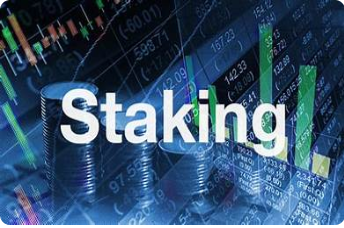Crypto Staking Explained: How to Earn Passive Income with Digital Assets
Staking is one of the most accessible and strategic ways to earn passive income in crypto. Whether you’re holding Ethereum, Cardano, or Solana, staking allows you to put your assets to work — supporting blockchain security while earning consistent rewards. In 2025, staking is no longer just a niche DeFi feature. It’s a core yield strategy for long-term investors, validators, and institutions alike.
What Is Crypto Staking?
Staking refers to locking up your cryptocurrency in a wallet or on a platform to help maintain the blockchain network — and earn rewards in return. It’s similar to earning interest in a savings account, but instead of a bank, you’re interacting with a decentralized protocol. Your staked tokens contribute to network consensus, and you’re compensated with newly minted coins or transaction fees.
In simple terms: staking is a way to earn passive crypto income by holding and securing digital assets.
How Does Staking Work?
Staking is possible on blockchains that use the Proof-of-Stake (PoS) consensus mechanism or its variants (e.g., Delegated PoS, Liquid PoS). Unlike mining, which requires expensive hardware and high energy consumption, staking only requires holding tokens in a compatible wallet or platform.
The more tokens you stake, the higher your chances of being selected to validate blocks and earn rewards. Some networks also allow delegation — meaning you can assign your tokens to a validator without running infrastructure yourself.
Benefits of Crypto Staking
- Passive income: Your crypto earns yield without active trading.
- Energy-efficient: No mining rigs or electricity costs required.
- Lower risk exposure: Assets remain in your control, unlike leveraged trading.
- Network contribution: Stakers help secure and decentralize the blockchain.
Top Cryptocurrencies for Staking in 2025

Not all cryptocurrencies support staking. Here are some of the most popular and reliable options:
- Ethereum (ETH) — transitioned to PoS, offering stable staking returns.
- Cardano (ADA) — known for its academic approach and strong staking infrastructure.
- Polkadot (DOT) — offers high yield and cross-chain interoperability.
- Solana (SOL) — fast transactions and scalable staking pools.
- Tezos (XTZ) — beginner-friendly with flexible delegation options.
How to Start Staking Crypto
- Choose your asset: Select a PoS-based cryptocurrency with strong fundamentals.
- Select a staking platform: Options include centralized exchanges (Binance, Kraken, Coinbase), hardware wallets (Ledger, Trezor), and software wallets (Trust Wallet, Atomic Wallet).
- Fund your wallet: Buy the desired crypto and transfer it to your staking platform.
- Activate staking: Depending on the platform, this may involve joining a staking pool or delegating to a validator.
- Track your rewards: Earnings may be distributed daily, weekly, or monthly.
Comparative Table: Types of Crypto Staking in 2025
| Staking Type | Liquidity | Average APR | Risk Level | Best Use Case | LSI Keywords |
|---|---|---|---|---|---|
| Locked Staking | Low (fixed term) | 6–14% | Medium | Long-term holders seeking higher yield | fixed staking rewards, crypto lock-up period |
| Flexible Staking | High (withdraw anytime) | 3–7% | Low | Short-term yield with liquidity access | unstake anytime, flexible crypto staking |
| Delegated Staking | Medium (via validator) | 5–10% | Depends on validator | Passive investors using trusted validators | staking delegation, validator commission |
| Liquid Staking | Very High (tokenized stake) | 4–8% | Smart contract risk | Active DeFi users needing composability | liquid staking platforms, stETH, rETH, DeFi staking |
| Native Protocol Staking | Medium | Varies by chain | Low to Medium | Direct staking via blockchain wallet | staking on-chain, crypto wallet staking |
Note: APR values are approximate and subject to change based on network conditions, validator performance, and governance updates.
Types of Crypto Staking

Locked Staking
Tokens are locked for a fixed period (e.g., 30, 60, or 90 days). Yields are typically higher, but funds are inaccessible during the lock-up.
Flexible Staking
Tokens can be unstaked at any time. Lower yield, but higher liquidity and control.
Delegated Staking
Users assign their tokens to a validator who performs the technical work. Common in networks like Cardano and Tezos.
Liquid Staking
Allows users to stake while retaining liquidity via derivative tokens (e.g., stETH, rETH). Popular platforms include Lido and Rocket Pool.
Expected Staking Yields in 2025
Staking returns vary by asset, platform, and lock-up duration. Here’s a snapshot of average annual percentage rates (APR):
- Ethereum: 4–6% APR
- Cardano: 5–7% APR
- Polkadot: 10–14% APR
- Solana: 6–8% APR
- Tezos: 5–6% APR
Centralized exchanges may offer promotional APRs, but terms can change frequently. Long-term holders often prefer native staking for transparency and control.
Risks of Crypto Staking
- Price volatility: Token value may drop, offsetting staking rewards.
- Lock-up limitations: Locked staking restricts access to funds during the staking period.
- Validator risk: Poor validator performance or malicious behavior can result in slashing or reduced rewards.
Best Practices for Secure Staking
- Use audited platforms with transparent reward structures.
- Diversify across multiple assets and validators.
- Enable two-factor authentication and hardware wallet protection.
- Stay informed about protocol updates and governance changes.
Why You Should Start Staking Now
Staking is no longer just a passive crypto strategy — it’s a core component of decentralized finance and long-term wealth building. With the rise of PoS networks and liquid staking protocols, earning yield on your crypto has never been more accessible.
Whether you’re a retail investor or managing institutional capital, staking offers predictable returns, network participation, and exposure to emerging DeFi ecosystems. The earlier you start, the faster you compound experience and capital.
Crypto staking is your gateway to sustainable yield — without trading stress or hardware overhead.
Staking in Crypto: Advanced Insights, Real Risks, and Pro-Level Strategies
Staking isn’t just “earn while you hold” — it’s a strategic layer in your crypto portfolio. In 2025, with Ethereum fully transitioned to Proof-of-Stake and liquid staking protocols booming, staking has become a battleground for yield, governance, and long-term positioning. Let’s break it down like pros.
Key Factors That Influence Staking Rewards
- Network inflation rate: Lower inflation = lower staking APR.
- Total staked supply: More stakers = diluted rewards.
- Validator performance: Uptime, slashing history, and commission fees matter.
- Protocol mechanics: Some chains offer dynamic APR based on governance votes.
In short: staking yield isn’t static. It’s shaped by tokenomics, validator behavior, and network health. That’s why blindly chasing “high APR” is a rookie move.
Best Practices for Maximizing Staking Yield
- Use risk-adjusted APR models — don’t trust raw numbers.
- Delegate to audited validators with low commission and high uptime.
- Consider liquid staking platforms (e.g., Lido, Rocket Pool) for flexibility.
- Track governance proposals — they can change reward structures overnight.
- Diversify across chains — Solana, Polkadot, and Cosmos offer different yield dynamics.
FAQ: 8 Real Questions About Crypto Staking in 2025
1. Is staking crypto still profitable in 2025?
Yes — but selectively. Ethereum staking yields ~4–6% APR, while Polkadot and Cosmos offer 10%+. The key is choosing networks with sustainable tokenomics and active validator sets.
2. What’s the safest way to stake crypto?
Use hardware wallets (Ledger, Trezor) or trusted platforms like Coinbase and Kraken. Avoid unaudited DeFi pools unless you understand smart contract risk. Always enable 2FA and monitor validator slashing records.
3. What is liquid staking and why is it trending?
Liquid staking lets you earn rewards while keeping your assets usable. You receive a derivative token (e.g., stETH) that can be traded, used in DeFi, or re-staked. It’s ideal for active yield strategies and composable finance.
4. Can staking rewards fluctuate?
Absolutely. APR changes based on network activity, validator performance, and governance votes. Some platforms update rates daily. Always check historical APR logs before committing.
5. What are the risks of staking crypto?
Price volatility, validator slashing, lock-up restrictions, and smart contract exploits. Staking is safer than trading, but not risk-free. Use diversified validators and avoid overexposure to one asset.
6. How do I choose the best validator?
Look for low commission (<5%), high uptime (>99%), and strong community reputation. Platforms like Stakewiz, Rated, and Validator.info offer performance dashboards. Avoid anonymous or unaudited operators.
7. Is staking better than yield farming?
Depends on your risk appetite. Staking offers predictable returns and lower risk. Yield farming can offer higher APY but comes with impermanent loss, smart contract risk, and token volatility. Many pros combine both.
8. Can I stake multiple assets at once?
Yes. Multi-chain wallets like Keplr, Trust Wallet, and Ledger Live support staking across Ethereum, Solana, Cosmos, and more. Diversifying staking positions reduces risk and improves yield stability.
Final Thoughts: Staking Is Evolving — Are You?
Staking in 2025 is no longer “set it and forget it.” It’s dynamic, multi-chain, and deeply tied to governance, liquidity, and macro trends. Whether you’re staking ETH for stability or DOT for high yield, the game is about strategy, not just holding.
Smart staking = sustainable yield + network impact + portfolio resilience.
So don’t just chase APR — understand it. Track validator metrics. Use liquid staking when needed. And always think in terms of risk-adjusted returns, not hype-driven numbers.
Disclaimer
This article is for informational and educational purposes only. It does not constitute financial advice, investment recommendations, or legal guidance. Cryptocurrency staking involves risk, including market volatility, validator failure, and smart contract vulnerabilities. Always conduct independent research and consult licensed professionals before making financial decisions.
Why “staking crypto for beginners” isn’t as simple as it sounds
Most guides say: “Just buy tokens and click stake.” But real talk? That’s like saying “just buy stocks” without explaining dividends, lock-up periods, or validator slashing. If you’re new to staking Ethereum or Cardano, you need to understand how APR works, what delegation means, and why choosing a validator with 99.9% uptime isn’t optional — it’s survival. Crypto staking for beginners should start with risk awareness, not just reward hype.
Staking vs holding: which builds wealth long-term?
Holding crypto in a wallet is passive. Staking crypto assets is proactive. When you stake Solana or DOT, you’re not just earning yield — you’re helping secure the network, participating in governance, and compounding your position. Long-term staking strategies outperform idle holding, especially when you use platforms with transparent APR history and low validator commission. If you’re serious about building wealth in crypto, staking isn’t optional — it’s foundational.

